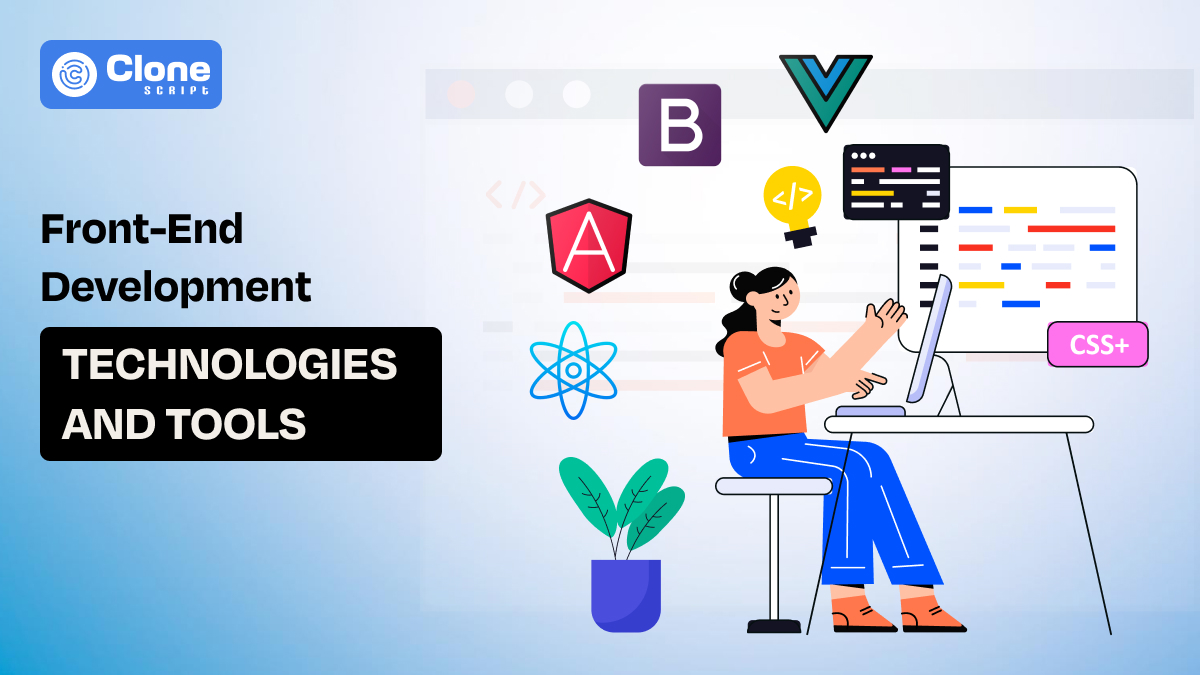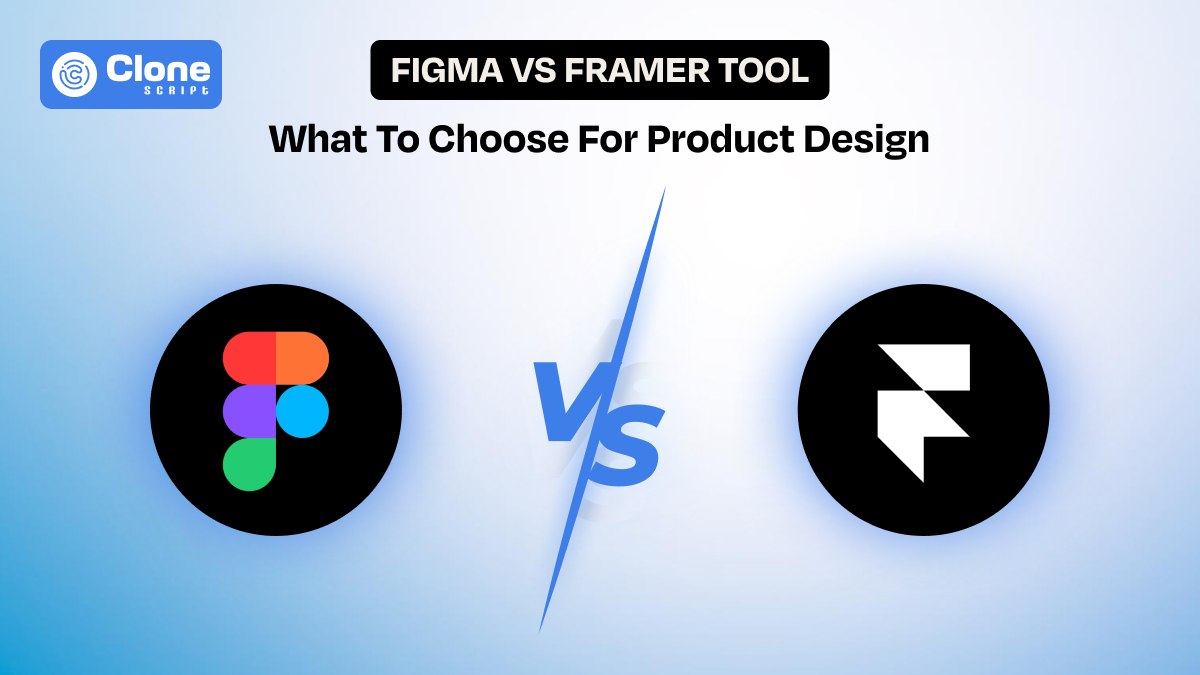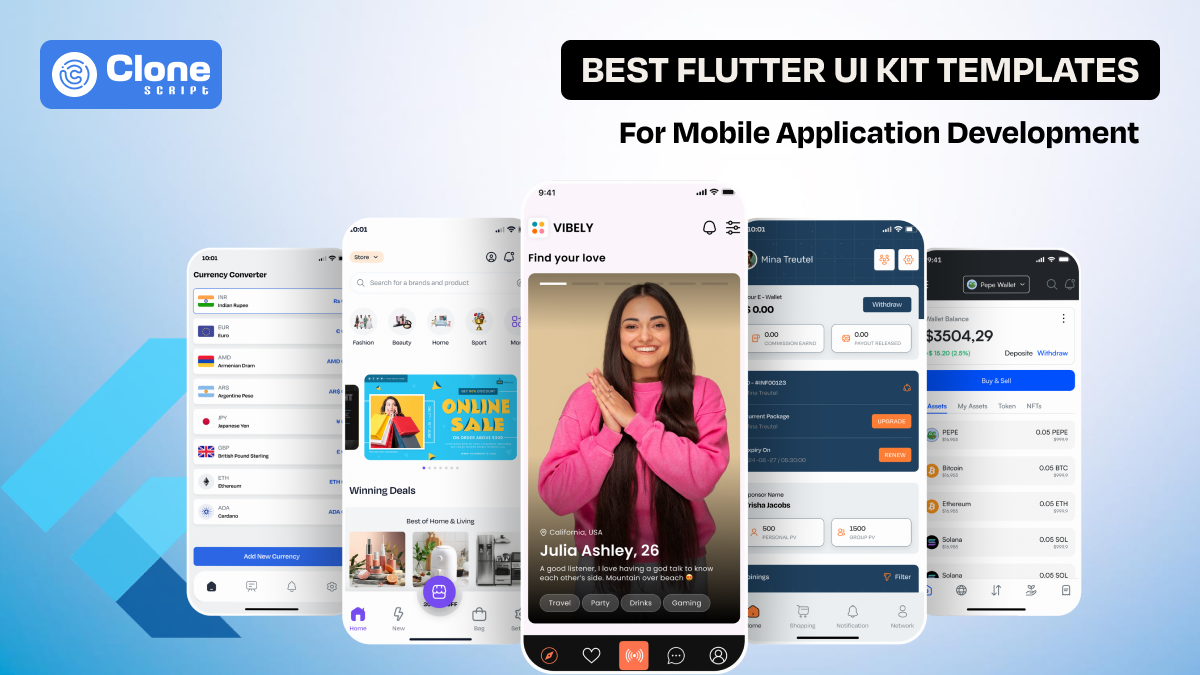The Ultimate Guide to Front-End Web Development Technologies and Tools
Front-end development is the art of bringing the web to life. You're the sculptor, developing digital experiences that captivate and delight users. From the sleekest mobile interfaces to the most complex web applications, your skills are the foundation of a seamless online journey.
This guide is your secret weapon, packed with the top tools, frameworks, and best practices to supercharge your workflow and build jaw-dropping web experiences that leave users in awe.
What is front-end development?
Front-end development involves building the visual components of a website or web application that users see and interact with. It encompasses designing layouts, implementing user interface (UI) elements, and ensuring the performance of the website across devices.
Here are the key elements of front-end development:
-
HTML (HyperText Markup Language): HTML provides the fundamental structure of a web page using tags. These tags define the different elements on a page, such as headings, paragraphs, images, links, and more.
-
CSS (Cascading Style Sheets): CSS makes web pages visually appealing and engaging. It is responsible for the visual presentation of HTML elements and controls aspects like:
-
Colors
-
Fonts
-
Layout (positioning, sizing)
-
Spacing
-
JavaScript: JavaScript adds interactivity to web pages. It is essential for building web applications that go beyond static pages, enabling features like user logins, data handling, and real-time updates.
Front-end development acts as a bridge between the back-end logic and the end-user interface. Skilled developers are adept at combining creativity with technical proficiency to create engaging, functional digital experiences for web applications.
What are the popular front-end technologies?
There are certain types of famous front-end technologies available and as a developer, you have to know about them.
1. HTML, CSS, and JavaScript
These three technologies form the foundation of front-end development. Recent advancements have enhanced their capabilities:
-
HTML5 introduces semantic elements and multimedia support useful to increase user experience.
-
CSS3 powers animations and layouts like Flexbox and Grid ideal for showcasing professionalism on web apps.
-
Modern JavaScript (ES6+) improves code readability with features like arrow functions and destructuring. This will manage the entire platform securely and add proven functionality.
2. Frameworks and Libraries
Front-end frameworks and libraries simplify development and offer reusable components. It means you don’t have to design each web component from scratch. Here is the list to consider:
-
Bootstrap: A popular and versatile front-end framework that provides pre-built, responsive HTML, CSS, and JavaScript components. It is easy to quickly create visually appealing and functional websites with a consistent look and feel.
-
Tailwind CSS: A utility-first CSS framework that provides a vast collection of low-level CSS classes, allowing developers to style components directly in their HTML. This leads to highly customized and efficient styling with minimal custom CSS.
-
React.js: A component-based JavaScript library for building user interfaces, renowned for its flexibility, efficient rendering with the virtual DOM, and a large and active community. This makes it a top choice for building dynamic and complex web applications.
-
Angular: A comprehensive and powerful framework for building large-scale, enterprise-level applications, known for its robust features, strong tooling, and a focus on maintainability and testability.
-
Vue.js: A progressive JavaScript framework that is known for its simplicity, ease of learning, and flexibility. It's a great choice for both small and large projects, offering a gentle learning curve and a balance of flexibility and structure.
3. CSS Preprocessors
CSS preprocessors are scripting languages that act as intermediaries between your code and the actual CSS that browsers understand. You write your styles in the preprocessor's syntax, and then a special tool (called a compiler or processor) translates it into standard CSS.
-
Preprocessors like Sass and Less streamline writing CSS by introducing variables, mixins, and nested rules. They save time and improve code maintainability. They can also help manage CSS specificity more effectively.
-
Using CSS preprocessors will increase productivity, code reusability, and readability. This is particularly important when working on complex projects with a large number of team members, as it ensures consistency and makes the codebase easier to understand and maintain.
Essential Front-End Development Tools
The right tools can enhance productivity, reduce errors, and ensure project success.
Here are some must-have tools for front-end developers:
1. Code Editors
A code editor is a developer’s workspace, where ideas transform into functional code.
-
Visual Studio Code (VS Code): Loved for its IntelliSense, debugging tools, and extensive extensions marketplace. This makes it ideal for large or small projects.
-
Sublime Text: Renowned for speed and simplicity, it allows developers to customize workflows effortlessly without a thorough study.
-
Atom: Offers Git integration and is fully customizable, preferred choice for open-source enthusiasts.
2. Version Control Systems
Version control helps track code changes and promotes team collaboration.
-
Git: The industry-standard tool for source control. It enables the branching and merging of codes effortlessly.
-
GitHub: Offers a collaborative platform for hosting Git repositories, complete with issue tracking, pull requests, and CI/CD integrations for seamless development.
3. Package Managers
Web applications rely on many building blocks called "dependencies.” These are pre-written code libraries that provide specific functionalities (like user authentication, data fetching, etc.).
-
npm (Node Package Manager): It is like the "app store" for JavaScript where you can find almost any functionality you need. It comes bundled with Node.js (a platform for running JavaScript outside the browser).
-
Yarn: Yarn is like an improved version of npm. It's known for being faster at installing dependencies and has built-in security features to help you avoid installing compromised libraries.
4. Task Runners and Bundlers
These tools automate repetitive and time-consuming tasks in the development process, making workflows more efficient and reducing errors.
-
Webpack bundles JavaScript, CSS, and other assets, optimizes them for faster loading times, and enables features like code splitting and advanced module loading.
-
Gulp automates tasks like minification, concatenation, linting, and testing, saving developers time and effort by streamlining the development workflow.
-
Parcel is a user-friendly bundler that requires minimal configuration, making it easy to get started quickly while still providing excellent performance and built-in features.
5. Testing Tools
In web development, testing ensures your applications are error-free and user-ready. Here is the list to test your front-end-developed website or app.
-
Jest: A JavaScript testing framework with a focus on simplicity, offering snapshots and mocking out of the box.
-
Cypress: Known for end-to-end testing, it’s ideal for ensuring seamless user interactions.
-
Mocha: A versatile testing framework that supports both unit and integration tests, giving developers flexibility and control.
Trending Front-End Development Practices
By following the front-end development trending practices your application truly stands out.
1. Responsive Web Design
As 60% of the global population owns smartphones having a responsive web application is very important. Frameworks like Bootstrap and Tailwind CSS simplify creating mobile-first, responsive layouts in minutes.
2. Progressive Web Apps (PWAs)
Another trend of front-end development is a core focus of PWAs. These apps have the best combination of web and mobile apps. They work offline, load quickly, and provide an app-like experience.
3. Accessibility
Inclusive design ensures your website is usable by everyone, including those with disabilities. Tools like Axe and WAVE help audit accessibility.
4. Server-Side Rendering (SSR) and Static Site Generation (SSG)
Technologies like Next.js enable faster page loads and improved SEO by pre-rendering content. This means your web application performs well and indicates a better user experience.
How to Choose the Right Front-end Tools and Technologies?
Selecting the right tools depends on your project's scope and requirements.
Here are factors to consider:
1. Project Needs:
-
Scope & Complexity: If you're building a complex, data-driven application with many features, a robust framework like Angular or React might be necessary. For simpler projects, a lighter-weight framework like Vue.js or even a plain HTML/CSS/JavaScript approach might be sufficient.
2. Learning Curve:
-
Ease of Use: If you're new to web development, choose tools with excellent documentation, plenty of tutorials, and a large, supportive community. React and Bootstrap are popular options in this regard.
3. Performance and Scalability:
-
Future Growth: Consider how the chosen tools will handle increased traffic and data volume as your project grows. Evaluate their performance characteristics and scalability potential to ensure they can support your application's future needs.
4. Community and Ecosystem:
-
Support & Resources: A strong community and ecosystem provide valuable resources such as libraries, tutorials, and forums. This can significantly speed up development and make it easier to find solutions to challenges you may encounter.
Ready to use Front-end Developed Website Templates
Conclusion
Front-end development is a vibrant field that demands continuous learning and adaptation. From foundational tools like HTML, CSS, and JavaScript to advanced frameworks and testing tools, the right combination can significantly enhance your workflow. By understanding the strengths of different technologies and following best practices, you can create exceptional web experiences that meet user expectations.
 BTC - Bitcoin
BTC - Bitcoin
 USDTERC20 - USDT ERC20
USDTERC20 - USDT ERC20
 ETH - Ethereum
ETH - Ethereum
 BNB - Binance
BNB - Binance
 BCH - Bitcoin Cash
BCH - Bitcoin Cash
 DOGE - Dogecoin
DOGE - Dogecoin
 TRX - TRON
TRX - TRON
 USDTTRC20 - USD TRC20
USDTTRC20 - USD TRC20
 LTC - LiteCoin
LTC - LiteCoin







